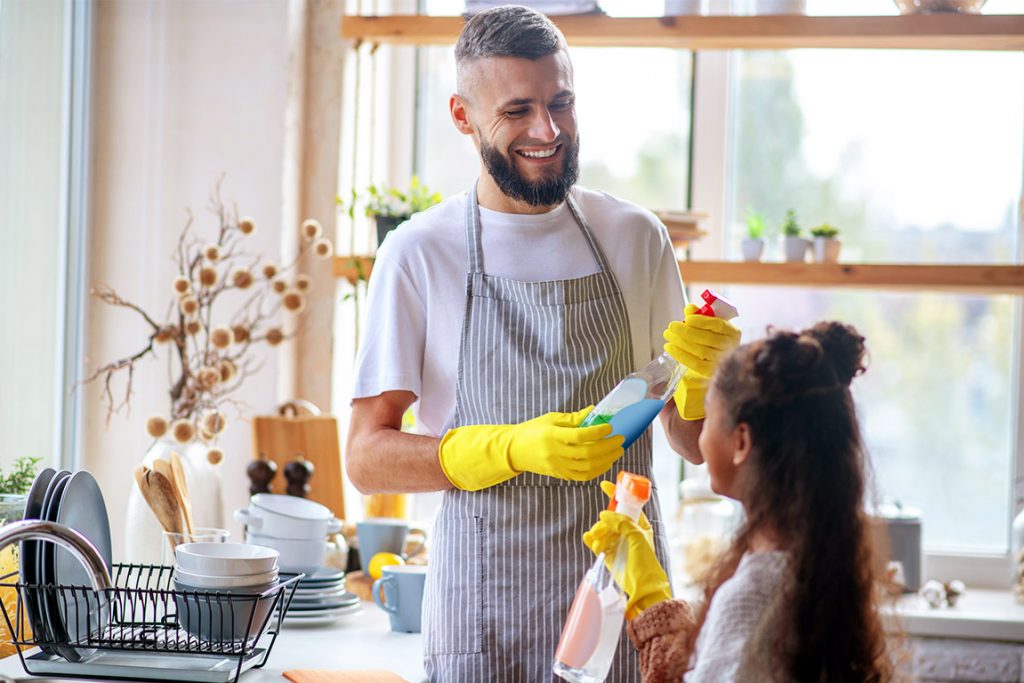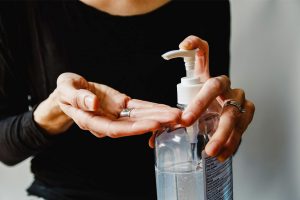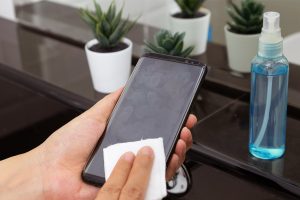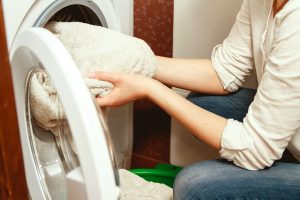Curbing Coronavirus Outbreak: Easy Sanitation Tips for your Home

As the story of the novel coronavirus (COVID-19) pandemic continues to unfold, the outbreak has affected every part of our lives. People have resorted to taking preventive measures at home in an attempt to protect their families from the virus.
Prevention at home is critical, especially for those who have to shelter-in-place, given that research on how long coronavirus can live on surfaces shows that it can linger on surfaces for several hours up to days.
It can be overwhelming to choose from the myriad of ways to protect yourself and your family while at home. The best thing to do is focus on what you can control and you can start with something simple like sanitizing your house. Wash your worries away by going back to good old cleaning and disinfection measures.
How to Sanitize Your Home
It’s important to establish your own sanitation protocols with your housemates to prevent coronavirus from reaching your home. Sanitation should be a team effort especially if household members go in and out of the house.
You can do all the cleaning you want but it won’t be as effective if others won’t do their fair share of sanitizing as soon as they arrive home. Easy sanitation protocols include disinfecting your shoes as soon as you arrive, washing your hands with soap and water, and refraining from touching your face.
Before you clean and disinfect your home, let’s learn the difference between the two.
 Cleaning shouldn’t be confused with disinfecting as they are two separate steps that should be done as part of your home sanitation protocol.
Cleaning shouldn’t be confused with disinfecting as they are two separate steps that should be done as part of your home sanitation protocol.
The Center for Disease Control (CDC) said that cleaning refers to removing dirt and impurities from surfaces which don’t kill germs but lower their numbers and the risk of spreading infection.
Disinfecting, on the other hand, is the process of using chemicals such as disinfectants to kill germs on surfaces. While it does not necessarily clean dirty surfaces, it kills germs on a surface after it’s been cleaned, thus lowering the risk of spreading infection. So clean dirty surfaces using detergent or soap and water before you start disinfecting.
Sanitize high-touch surfaces
When cleaning and sanitizing, consider also the types of surfaces that are most susceptible to germs and viruses. The novel coronavirus (COVID-19) has been found to stay on surfaces up to 4 hours on copper, 24 hours on cardboard, and 2-3 days on plastic and stainless steel.
Be sure to routinely sanitize frequently touched surfaces such as tables, doorknobs, light switches, handles, desks, toilets, faucets, sinks, stair railings, and electronics with household cleaners and EPA-registered disinfectants.
Use easy disinfectant alternatives
The U.S. Environmental Protection Agency (EPA) released a list of disinfectants to use against COVID-19. Don’t forget to read each product’s instruction for use for a more effective procedure.
If you don’t have store-bought disinfectants at home, you can make an effective alternative with properly diluted bleach.
Here are two ways to prepare a bleach solution:
- Mix 5 tablespoons (1/3rd cup) of bleach per gallon of water.
- Mix 4 teaspoons bleach per quart of water.
When using household bleach, make sure to follow these guidelines:
- Check the manufacturer’s instructions for application and that the product is not past its expiration date.
- Ensure you leave the bleach in contact with the surfaces for at least 1 minute.
- Allow proper ventilation during and after application.
- Never mix household bleach with ammonia or any other cleanser.
You can still do a thorough job of cleaning with soap, water, and a bleach solution if cleaning and disinfectant products aren’t readily available.
Disinfect your devices and laundry
 Cleaning and disinfecting shouldn’t stop at high-touch surfaces in your living spaces. This should also include disinfecting your devices and your laundry. This way you cover more areas to prevent coronavirus from entering and lingering in your home.
Cleaning and disinfecting shouldn’t stop at high-touch surfaces in your living spaces. This should also include disinfecting your devices and your laundry. This way you cover more areas to prevent coronavirus from entering and lingering in your home.
The number of people working remotely has risen with the coronavirus quarantine. Working from home has increased our screen time and thus, our use of electronics — which have been found to have more germs than a toilet.
To make sure germs or viruses aren’t building up on your electronics, here’s how to clean and disinfect your devices such as cell phones, tablets, touch screens, remote controls, and keyboards.
Disinfect exterior surfaces using alcohol-based disinfectant wipes or a non-abrasive spray containing at least 70% isopropyl alcohol. Dry surfaces thoroughly to avoid any left over disinfectant liquids from pooling on your device. Refrain from using straight isopropyl alcohol as it may strip off necessary hydrophobic and oleophobic coatings that keep water and oil from damaging your device.
It’s also essential to take extra care in doing your laundry. Take note of these important cleaning and disinfection steps for your laundry.
 If one of your housemates is sick, wear disposable gloves when you’re doing the laundry and discard after each use. If you don’t have gloves to use, be sure to wash your hands after handling dirty laundry.
If one of your housemates is sick, wear disposable gloves when you’re doing the laundry and discard after each use. If you don’t have gloves to use, be sure to wash your hands after handling dirty laundry. - If you’re using reusable gloves, don’t use them for other purposes. Dedicate its use only for cleaning and disinfecting surfaces for COVID-19. Immediately wash your hands with soap and water after using the gloves.
- Avoid shaking dirty laundry as doing so can potentially disperse viruses into the air.
- While following the clothing item’s washing instructions, if possible wash clothes at a higher temperature setting and have your clothes dry completely.
- Use the tips on sanitizing areas in your home to clean and disinfect hampers and laundry bags.
After cleaning and disinfecting all around the house, it is especially important to wash your hands and avoid touching your eyes, nose, and mouth as recommended by institutions such as the World Health Organization (WHO) and CDC.
As it is in everybody’s interest to have clean and disinfected homes free from COVID-19, Poplar Homes has strengthened its cleanliness standards in property management procedures.
Renters about to move in a Poplar home can rest assured their new home is clean and sanitary. As a standard, Poplar’s full-time Home Services deep cleans each home before the move-in of a new resident.
For prospective renters still looking for a home, we’re making the rental search safer with our contactless rentals. Poplar combines a series of tools, such as its ACE chatbot that allow users to view homes for rent and take a virtual tour to help prospects rent a home safely and remotely without human contact necessary.
We hope the following measures will prevent COVID-19 from entering your homes — be it the home that you’re living in right now, or the home you’re about to move into.
Our team is ready to answer any questions and concerns you may have about our property management solutions for renters and owners during these trying times. Read more about Poplar’s tech-enabled property management solutions during this global pandemic.
Recent Comments